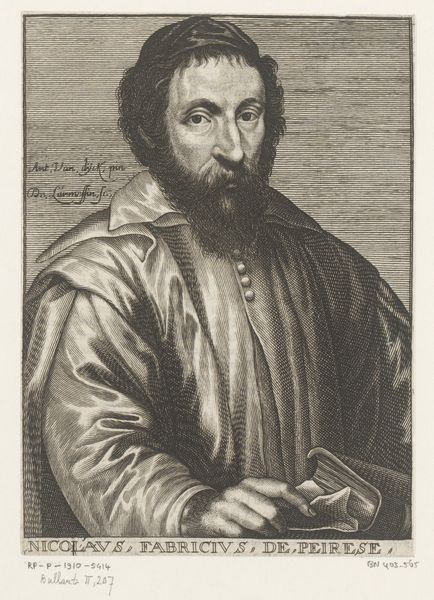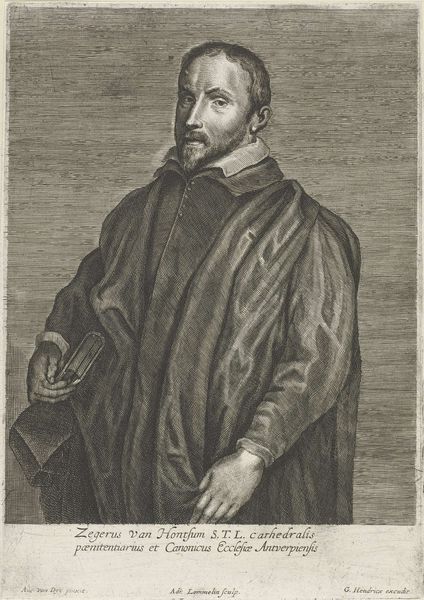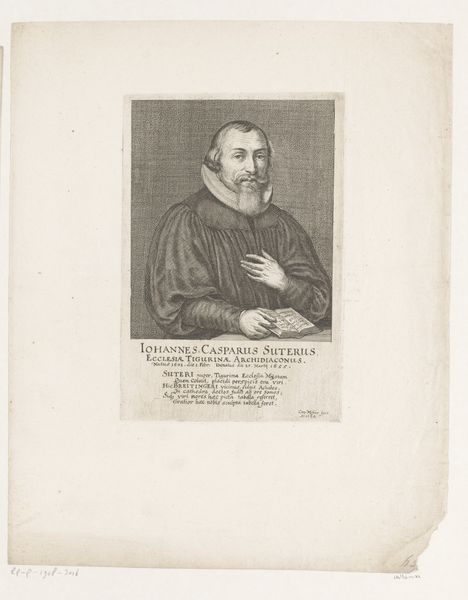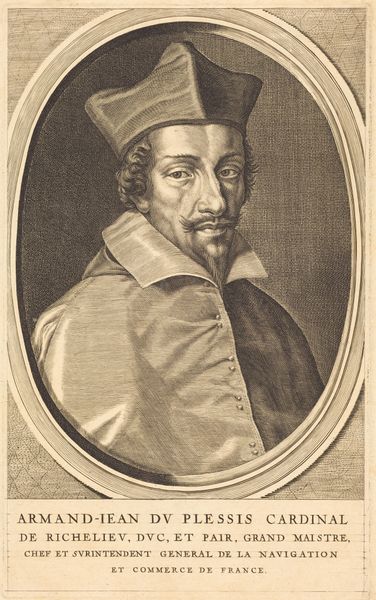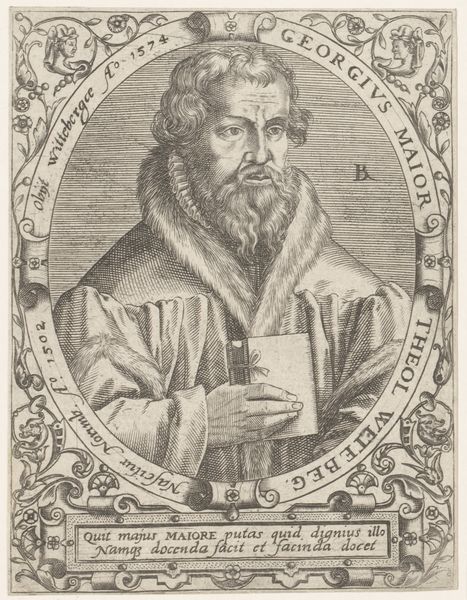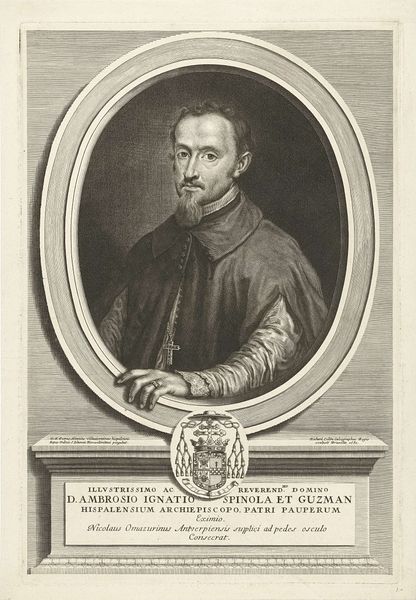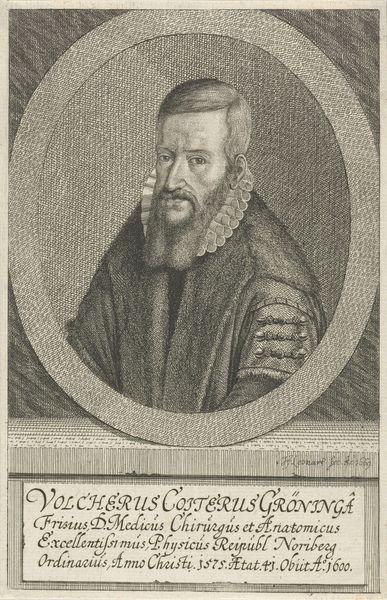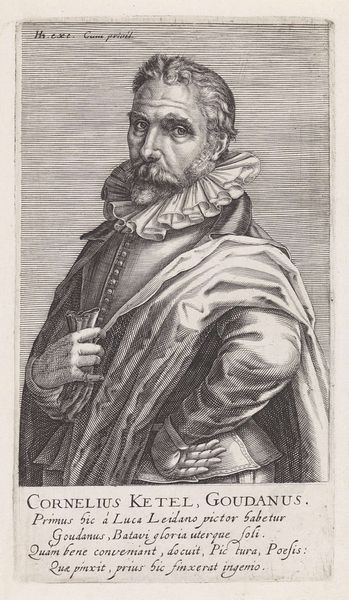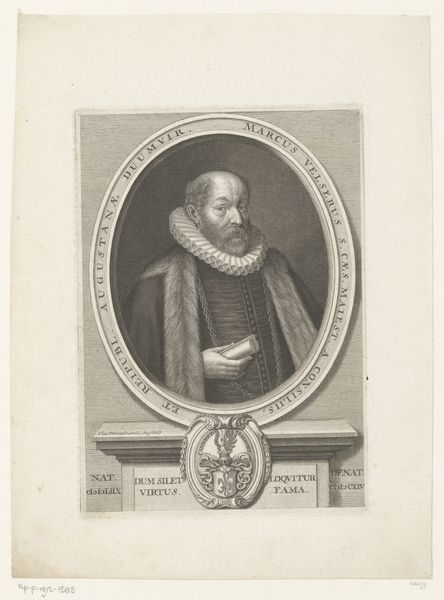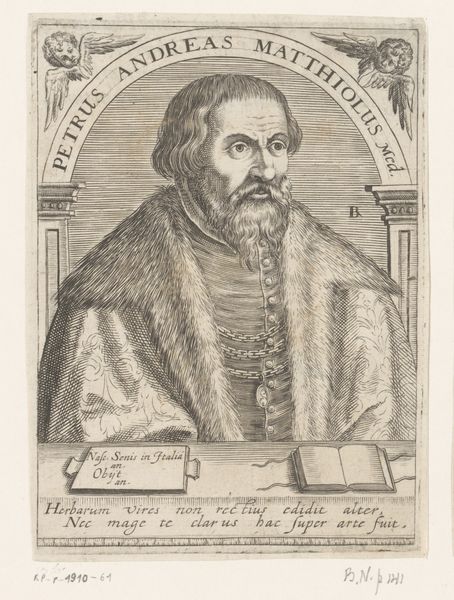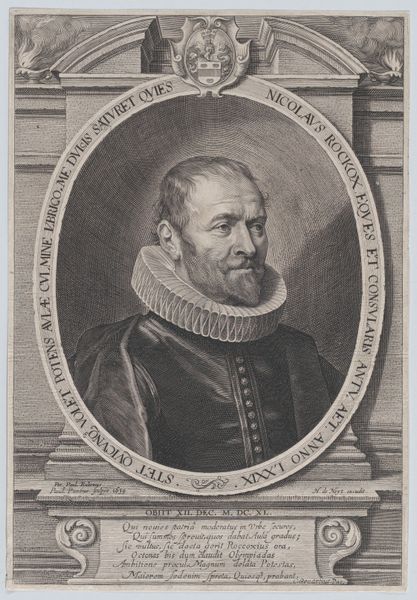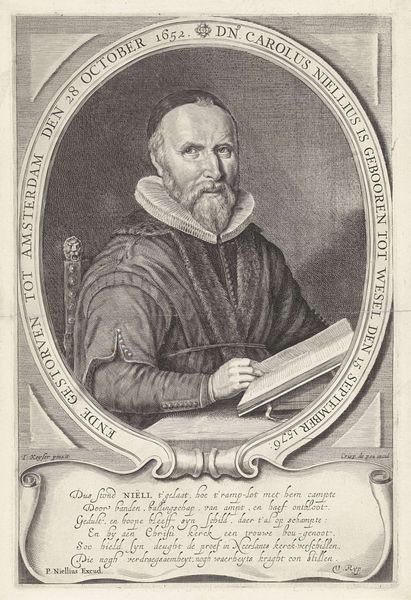
print, engraving
#
portrait
#
baroque
# print
#
engraving
Dimensions: height 243 mm, width 159 mm
Copyright: Rijks Museum: Open Domain
Curator: Here we have Lucas Vorsterman I’s "Portret van Nicolas-Claude Fabri de Peiresc," a print dating from 1630 to 1646, currently residing in the Rijksmuseum. Editor: It’s… overwhelmingly monochrome. The starkness emphasizes a severe composure, an almost monastic severity, offset only slightly by the billowing sleeves of the sitter's robe. Curator: Yes, the monochromatic palette amplifies the textural richness. The hatching and cross-hatching in the engraving define form, create light and shadow, and ultimately imbue the image with a certain psychological depth, a tension between austerity and opulence, very characteristic of Baroque portraiture. Editor: Indeed. I am most struck by how this engraving, as a form, replicates the textures and qualities of painted works, particularly how Vorsterman mimics layers of thin glazes through complex systems of hatching. Think of the labour, the craft inherent in the reproductive process itself, making the work both accessible, and simultaneously precious. Curator: Observe also the figure's pose. De Peiresc is portrayed mid-action, a learned man seemingly interrupted from study. The book and manuscript function as allegorical objects – symbols of intellect. Moreover, note how this organization of planes contributes to the overall compositional harmony and reinforces its symbolic program, which resonates with intellectual prestige. Editor: Right, the symbolic weight of those objects versus the physicality, the weight of the paper and ink impressed to create the illusion…it creates a curious tension. There’s an economy to printmaking often overlooked. What materials and processes had to come together to produce something so readily available? Curator: That contrast is crucial to understanding this print. Its meticulous formal articulation yields not just a visual likeness, but a potent intellectual statement about its time. Editor: It pushes us to consider the conditions of art-making itself, shifting focus from iconography to the often invisible, though essential, labor needed for production.
Comments
No comments
Be the first to comment and join the conversation on the ultimate creative platform.
